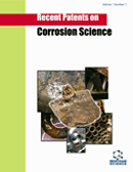Abstract
We present a review of both experiments and atomistically-detailed simulations of both liquid and gas transport through carbon nanotube membranes. Carbon nanotubes have exceptional transport properties due to the remarkable smoothness of the potential energy surface inside carbon nanotubes. Membranes composed of carbon nanotubes have the potential to provide unparalleled performance as gas and liquid separation membranes. Recent novel fabrication techniques that permit the assembly of vertically aligned carbon nanotubes in membrane platforms are enabling the testing of that transport performance. Potential applications of carbon nanotube membranes in desalination are especially promising, as computer simulations indicate that membranes having nanotubes of the correct diameter will be highly efficient at rejecting ions while allowing transport of water. Furthermore, recent experimental studies suggest that ion exclusion can be controlled by electrostatic interactions between the ions and fixed charges on the carbon nanotubes.
Keywords: Carbon nanotube membranes, computer simulations, vertical aligned carbon nanotube liquid transport, gas transport, desalination, ion exclusion.






















